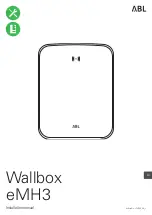
more quickly. If you force the gearshift lever into position, this action
defeats the purpose of the synchronizer by causing gear clash.
Shifting with a Non-Synchronized Transmission
See
Clutch brake
and
Double clutch procedures
in the
Clutch
section
of this chapter.
Clutch
Do not ride or slip the clutch as this causes unnecessary heat and wear.
Maintain the specified clutch adjustment to prolong its life and regularly
inspect the clutch control linkage for tightness. See the
Scheduled
Maintenance
chapter for other maintenance information. When
adjustment of the clutch is necessary, it is very important that the work
be performed properly or early clutch failure may result and a costly
clutch overhaul may become necessary. Only a qualified technician
should perform clutch work.
Note:
Continued use of a damaged or worn clutch, prolonged clutch
slippage or downshifting at excessive speeds can result in a failure of the
engine, transmission or clutch components.
Note:
To avoid premature clutch wear and failure, do not drive with
your foot resting on the clutch pedal or use it to hold your vehicle at a
standstill on an upgrade as when waiting for a traffic light.
Engaging the Clutch
•
Always start in the proper gear. An empty vehicle can start in a
higher gear than a fully loaded vehicle. Starting in too high a gear can
cause clutch slippage and excessive heat and wear on the clutch. A
gear that starts the vehicle moving at idle speed is the correct gear. If
you have to rev the engine to get your vehicle going, the gear
selection is too high.
•
Do not shift until your vehicle has reached the proper speed.
Upshifting before your vehicle has reached the proper speed can
cause clutch slippage and excessive heat and wear on the clutch.
•
Never hold a vehicle on a grade with the clutch. This causes the
clutch to slip and can actually burn up the clutch.
•
Never coast with the clutch disengaged. The high RPM (sometimes
over 10000) can actually burst the facing material of the clutch.
•
Never engage the clutch while coasting. Re-engaging the clutch after
coasting may not only cause a great shock to the clutch, but the
whole drivetrain. Internal engine damage or clutch and flywheel
failure can result from this.
Transmission
123
2015 F-650/750
(f67)
Owners Guide gf
(ownloose)
, 1st Printing, December 2013
Canadian_French
(fr_can)
















































